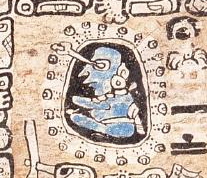«2012 is the Apocalypse predicted by the Mayans…»
 Nowadays, one of the topics that most strongly feeds the (profitable) work of specialists In the paranormal, it is a supposed prophecy of the End of the World established by the Mayan culture, which is even attempted to be connected to well-known "friends" of the future: Nostradamus, I-Ching, Merlin, Egyptians, etc. December 21, 2012 (22 or 23 are also cited), would mark the end of the Mayan calendar, and many warnings are already circulating on the Internet, books and TV (even one movie!) about that «now yes» Something is in store for the Earth. 2012 is the year, and its «guarantee» is one of the most interesting cultures of antiquity. How much truth is there in this?
Nowadays, one of the topics that most strongly feeds the (profitable) work of specialists In the paranormal, it is a supposed prophecy of the End of the World established by the Mayan culture, which is even attempted to be connected to well-known "friends" of the future: Nostradamus, I-Ching, Merlin, Egyptians, etc. December 21, 2012 (22 or 23 are also cited), would mark the end of the Mayan calendar, and many warnings are already circulating on the Internet, books and TV (even one movie!) about that «now yes» Something is in store for the Earth. 2012 is the year, and its «guarantee» is one of the most interesting cultures of antiquity. How much truth is there in this?
Pseudoscience says...
The Mayan culture is one of the most mysterious of antiquity, due to its extremely advanced knowledge. It was this knowledge that allowed them to formulate their 7 prophecies, where the last one predicts the end of the Earth, since we will align with the center of the galaxy; The Sun will receive a synchronizing beam from the galactic center, which will change its polarization and generate a gigantic radiant flare. This date marks the end of the Mayan calendar and with it our final apocalypse. This date is December 21, 2012.
Science says...
The Mayan culture (III BC to XVI AD) is perhaps the most studied among those located in the pre-Columbian period. It has aroused the interest of archaeologists, anthropologists and even astronomers, due to the multitude of legacies left at a social, cultural and infrastructure level, which were largely influenced by its mythology, associated with deities captured in celestial bodies. It was precisely this influence that distinguished the Mayans as avid observational astronomers, since they considered the night sky sacred. Thus, although they did not have modern measuring and observation instruments, the Mayans were able to record various phenomena with the naked eye and with great precision. Among other things, they determined the cycles of Venus and the Moon, solstices and equinoxes, eclipses, the retrograde movement of Mars and formulated a precise calendar system. All this accompanied the development of mathematics, with a vigesimal basis, and which used zero, a unit that had not yet been discovered in the First World.
About Mayan astronomy
 Although many people have insisted on attributing superhuman, magical and even extraterrestrial-assisted qualities to the Mayan astronomical achievements, my first clarification comes from the fact that Everything achieved by the Mayan culture is perfectly achievable by humans., and to a certain extent, comparable to other ancient cultures. However, it should be considered as This was possible:
Although many people have insisted on attributing superhuman, magical and even extraterrestrial-assisted qualities to the Mayan astronomical achievements, my first clarification comes from the fact that Everything achieved by the Mayan culture is perfectly achievable by humans., and to a certain extent, comparable to other ancient cultures. However, it should be considered as This was possible:
1) Observations of several months were required, just to notice changes experienced by celestial objects. Then more months and several years, as observed, to determine cyclical and repetitive patterns over time.
2) All observations, being limited to visual observation, were restricted to celestial bodies visible to the naked eye. Therefore the only observational records come from the observation of the Sun, Moon, Mercury, Venus, Mars, Jupiter and Saturn, but not beyond.
3) The Mayans had plenty of free time, and a full team of priests (the social class authorized to exercise this role of "astronomers" in Mayan society) to establish observations and corroborate them.
4) Although the Mayans did not have modern astronomical instruments, they did use very rudimentary instruments that served measurement purposes (e.g. gnomon, zenith tubes, geometric cross, etc.).
Any amateur astronomer can attest that Yeah It is possible to make inferences about astronomical events only on the basis of careful observation and recording. While today we have more knowledge and technologies (e.g. telescopes) to make such inferences more quickly, astronomy without modern instruments is well supported, for example, by this excellent guide: «Astronomy without a telescope«. You can also see the following articles on my website: Astronomy by day and Astronomy at night.

